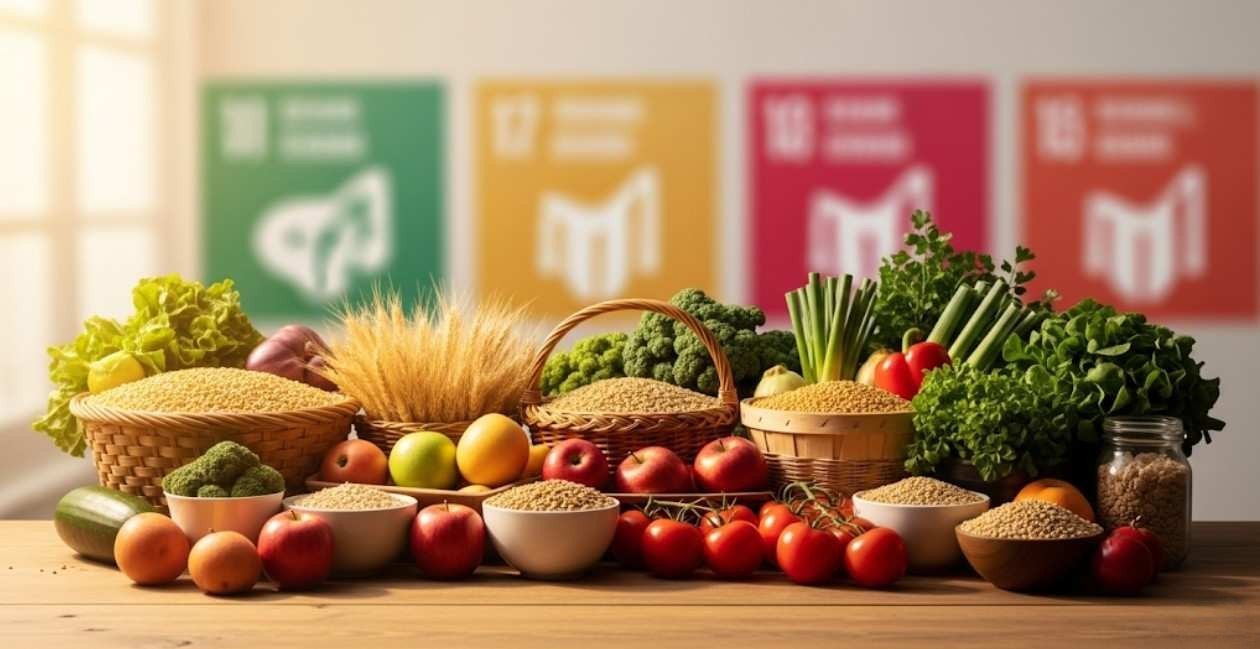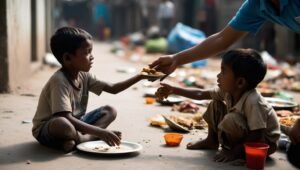Table of Contents
- How Food Donation and SDGs Align to End Hunger
- What Are the SDGs?
- 1. Food Donation and SDG 2: Zero Hunger
- 2. Food Donation and SDG 12: Responsible Consumption and Production
- 3. Food Donation and SDG 13: Climate Action
- 4. Food Donation and SDG 3: Good Health and Well-Being
- 5. Food Donation and SDG 17: Partnerships for the Goals
- 6. Technology and Innovation in Food Donation
- 7. Corporate Social Responsibility and SDGs
- 8. The Role of Citizens
- 9. Food Donation as a Bridge Across Goals
- Frequently Asked Questions
- Conclusion
How Food Donation and SDGs Align to End Hunger
Food donation is more than an act of kindness. It is a solution to hunger, waste, and inequality. At the same time, the world has set a plan to make life better for all. This plan is called the Sustainable Development Goals, or SDGs. Together, food donation and SDGs create powerful change.
India, like many countries, struggles with both hunger and food waste. Millions of meals go uneaten while families sleep on empty stomachs. This is where food donation comes in. By connecting surplus food to people in need, we fight hunger and support sustainability.
What Are the SDGs?
In 2015, the United Nations introduced 17 Sustainable Development Goals. These goals address issues like poverty, hunger, climate change, and equality. They aim to be achieved by 2030.
One of the most important is Goal 2: Zero Hunger. But food donation also links to many other goals such as Goal 12: Responsible Consumption and Production, and Goal 13: Climate Action. That is why connecting food donation and SDGs is so important. For a full list of the SDGs, visit to the United Nations SDGs website.
1. Food Donation and SDG 2: Zero Hunger
Ending hunger is at the core of food donation. India has enough food for everyone, but access is uneven. Donating food bridges this gap. It ensures surplus food reaches those who need it most.
This is why NGOs are vital. They collect safe, edible food from hotels, events, and households. They then deliver it to children, the elderly, and families in need.
Every meal donated moves us closer to achieving Zero Hunger in India. See How Food Donation NGOs Collect and Distribute food.
2. Food Donation and SDG 12: Responsible Consumption and Production
Food waste is a massive problem. The UNEP Food Waste Index shows that India wastes over 68 million tonnes of food every year. This happens while millions go hungry.
SDG 12 pushes for better use of resources. Food donation is one solution. Instead of wasting meals, food is saved and shared. This reduces waste and teaches responsibility. have a look at UNEP Food Waste Index Report.
Food donation also helps companies. By reducing waste, they save money and strengthen their social responsibility.
3. Food Donation and SDG 13: Climate Action
Food waste harms the planet. When food rots in landfills, it releases methane, a powerful greenhouse gas. Reducing waste through food donation cuts emissions and protects the environment.
For India, where climate change affects farmers and crops, this is vital. Food donation supports both people and the planet. This makes it a key step toward climate action.
4. Food Donation and SDG 3: Good Health and Well-Being
Hunger is not just about empty stomachs. It leads to malnutrition and poor health. Children who lack nutrition struggle in school and face health issues for life.
Food donation provides healthy meals that improve well-being. Nutritious food builds stronger bodies and brighter futures.
5. Food Donation and SDG 17: Partnerships for the Goals
No single group can end hunger alone. Partnerships are crucial. Food donors, NGOs, businesses, and the government must work together.
This is what SDG 17 is about. Collaboration drives progress. Food donation is a perfect example. It brings people together for one common goal: a hunger-free world.
6. Technology and Innovation in Food Donation
Technology is making food donation easier. Apps now connect restaurants and hotels with NGOs in real time. Cold storage and better transport reduce spoilage. Artificial intelligence predicts demand and reduces surplus.
These innovations make the link between food donation and SDGs stronger. India can embrace these tools to scale solutions.
7. Corporate Social Responsibility and SDGs
Corporate Social Responsibility (CSR) is growing in India. Many businesses now align their CSR work with the SDGs. Food donation is a direct way for companies to contribute.
By donating surplus food, they support SDG 2, SDG 12, and SDG 13. They also build a positive image among customers. For more insights read, Food Waste Solutions for Corporates: How Businesses Can Reduce Waste Effectively
8. The Role of Citizens
Citizens also play a role in meeting the SDGs. Households waste large amounts of food. But families can plan meals better, store food wisely, and donate surplus.
Simple steps like sharing extra food with neighbours or NGOs make a difference. When citizens take action, they add strength to the global fight against hunger.
9. Food Donation as a Bridge Across Goals
Food donation is unique because it supports many goals at once. It reduces hunger, cuts waste, lowers emissions, improves health, and builds partnerships.
This shows the power of one action to create change across different areas. That is why linking food donation and SDGs is not only logical but necessary.
Frequently Asked Questions
1. How does food donation help achieve the SDGs?
Food donation supports SDG 2 (Zero Hunger) and SDG 12 (Responsible Consumption). It also connects to health, climate, and partnerships.
2. Why is food donation important in India?
India faces high hunger levels and high food waste. Food donation helps balance these two problems.
3. Can companies link food donation to their CSR goals?
Yes. Companies can donate surplus food and align their CSR with SDGs, improving brand value and social impact.
4. What role do NGOs play in food donation?
NGOs collect surplus food from donors and deliver it to people in need. They act as a bridge between waste and hunger.
5. How can I contribute to food donation?
Individuals can avoid waste at home, donate extra food, and support NGOs that focus on food distribution.
Conclusion
Food donation is more than charity. It is a solution that touches hunger, health, environment, and equality. It aligns directly with the Sustainable Development Goals.
India has the power to make progress faster by scaling food donation. With government support, corporate partnerships, and citizen action, this vision is possible.
At Reshine Organisation, we turn surplus food into meals every day. We align our work with the SDGs to create a future without waste and hunger.
Join us today. Your donation can support food donation and SDGs. Together, we can build a hunger-free India.




